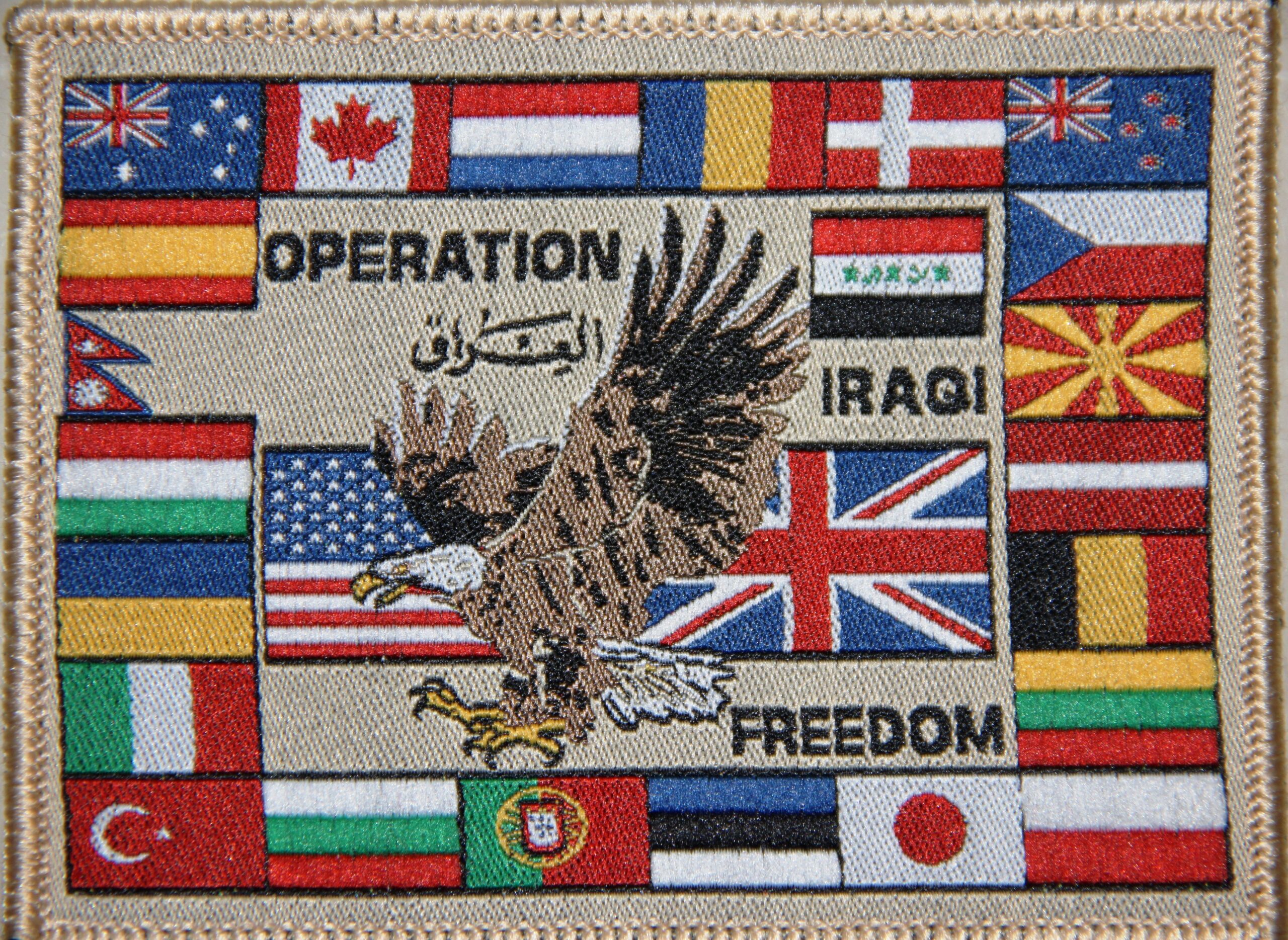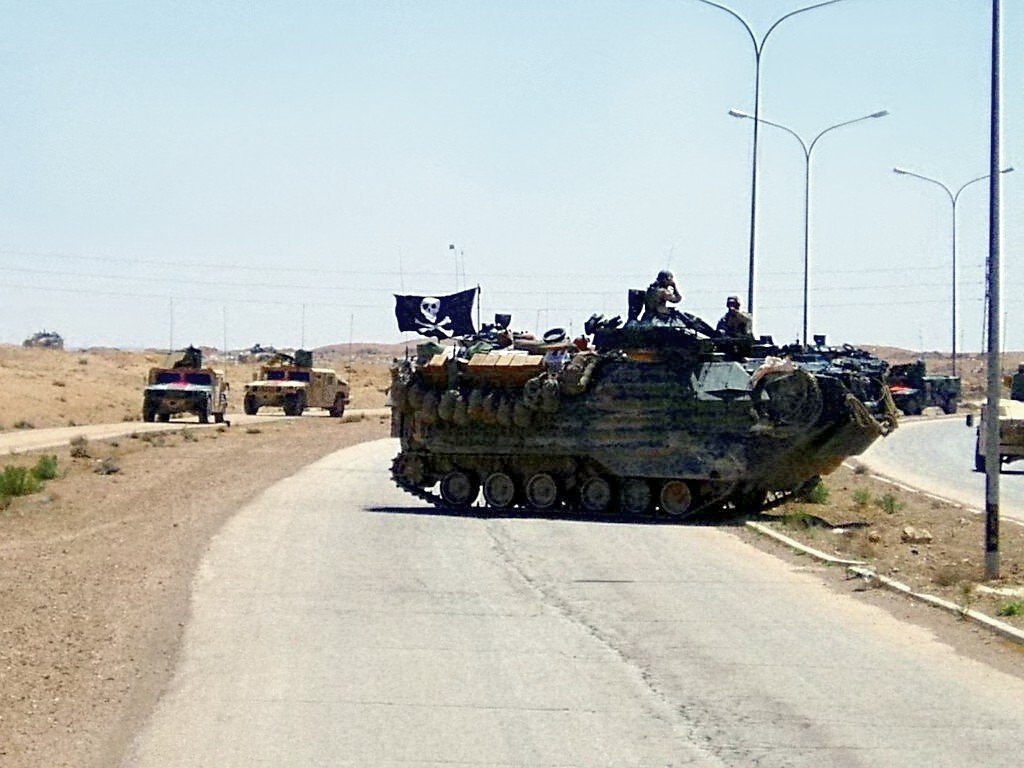Panzer Battalion
September 11, 2001, changed the way the United States perceived its role in the world. The end of the Cold War had brought an illusion of lasting peace and security over the west, an illusion that was shattered as civilian planes were turned into weapons. On September 20, US President George W. Bush addressed the American nation, emphasising that the new war on terror would begin with those behind the attack – the terrorist groups of Al Qaeda – but it would not end until the those who harboured terrorists and assisted or enabled them had been defeated all over the world.
The Bush Doctrine transformed the national military strategy from limited peacekeeping missions to full on war, with boots on the ground on foreign soil. The war in Afghanistan that began in October ended in the complete defeat of the conventional Taliban militia in a short time. But this was just a first step, and also served as a training ground for preparation and mobilisation, which the US would need to defeat Saddam Hussein’s regime in Iraq.
Operation Iraqi Freedom

Since the Gulf War in the early 90s, the US military presence safeguarded Kuwait against Iraqi aggression, but by March 2003 it would be the jumping off point for a full invasion. By March 20, the ultimatum for Saddam Hussein and his sons to exit Iraq had expired. Operation Iraqi Freedom, with its rather lofty goal of establishing a democratic, peaceful and prosperous Iraq, free from the oppression of the Ba’athist regime, was to begin.
On the 20th, US forces, supported by a coalition contingent from Australia, Great Britain and Poland, advanced. The ultimate objective was Baghdad. Surprise attacks by Tomahawk missiles to kill Saddam and his high command had failed in the nights before, but this was all just the beginning of a new age of warfare. The classic industrial age had been overturned by the new age of information-based warfare. Battlefields were observed through digital links, and units and missiles were guided by Global Positioning Systems (GPS). This was all new.
First blood was drawn at the Tallil Air Base and An Nasiriyah, close to the Euphrates River. Would the Iraqi forces sell themselves dearly with determined and disciplined resistance? Or would they surrender or run in the face of overwhelming opposition?
Iraqi High Command was very much aware that they would stand no chance against American tanks in the open desert. Instead, they had planned for a wide defence with dispersed strong points all over the Green Line, which ran straight through the country. The most effective Iraqi defences were placed along the highways and in the Tigris-Euphrates Valley, which the coalition forces would have to use to advance quickly.

Most Iraqi soldiers stood by their colours initially, engaging the invaders with the weapons available to them, but there was only so much they could do with ancient T-62 tanks against modern A-10 warthogs and bunker busting battle tanks. Armed with a minimal air force, they suffered terrible losses the night of ‘shock and awe’ – March 22. The full might of the coalition air force descended on Iraq’s command centres, air defence systems and missile and artillery batteries. All throughout the country the explosions flared from the cruise missiles fired by warships in the Persian Gulf.
The immediate Iraqi response was to fire Theatre-Ballistic-Missiles and surface-to-surface missiles towards the invading force and into Kuwait. However, the air defence net of Patriot batteries from Kuwait to Saudi Arabia and Turkey was worth the money, and blew 100% of those missiles straight out of the air before they could do any harm. The coalition was worried about a chemical attack. It is important to remember: one major reason why the US had attacked Iraq was the belief that Iraq possessed Weapons of Mass Destruction, and now, as the regime was one the verge of collapse, if it had them, it would surely use them.
Guerrilla fighters
The second wildcard was the host of irregular forces. The Ba’ath Party militia, and especially the fanatical Saddam Fedayeen, ‘Saddam’s Martyrs’, may have been only poorly trained and mostly equipped with Kalashnikovs and rocket-propelled grenades, but their fanaticism was cause for concern. American soldiers soon began complaining that they could not separate the guerrilla fighters from the civilians since they wore no uniforms.
The guerrillas had stashed munitions around the big cities, in schools and mosques, hoping to draw the attackers into the teeth of a ‘popular army’. Others like the Al Qud militia, the youth organisation ‘Lions of Saddam’ and non-Iraqi volunteers would be equally dangerous in their fanaticism, if not in their military value. They didn’t wear uniforms either and hid in hospitals and schools, communicating via low-power radios and simple cell phones.
On March 23, Iraq’s defence stiffened. The regular army was fortifying strong points all over the country, while irregulars were gathering in the city streets or attacking the long lines of coalition supply columns. Task Force Tarawa lost 18 men trapped in an open engagement, while the 507th Maintenance Company ran into a hail of fire with 11 killed and 16 captured.
The Americans used their combined arms doctrine to the fullest. It was a systematic approach to envelop cities and strong points from both sides, leaving it to airstrikes and attack helicopters to soften up the defences before the armour engaged.
Hunter-Killer teams of Bradley and M-1 tanks, outfitted with superior fire control as well as night and thermal vision, fired deadly combinations of sabot and HEAT shells into enemy armour. Hellfire missiles marked headquarters for F-15 pilots to take out. All while more mobile reconnaissance troops in Humvees continuously pushed on. Supported by informers within the city, that were often taxi-drivers on mobile phones, special ops troops made surgical strikes against Ba’ath party buildings. In the south, UK forces were isolating Basra, taking heavy fire from the irregular forces hiding inside the city. Kurdish Peshmerga forces were operating the north, trying to draw Iraqi forces away, while Special Ops were securing key airfields, military facilities and missile batteries.
It became clear, though, that all along the Green Line they were facing an enemy that was prepared to fight asymmetrically. Snipers and machine gunners lay in ambush, mines and explosives were hidden along the roads and rocket launchers were fired from civilian buildings. Mortar pits and heavy guns mounted on pickup-trucks took the advancing columns under fire. Republican Death Squads forced civilians to fight at gunpoint, forcing them out into the streets where they met certain deaths. There were suicidal attacks with RPGs and trucks against tanks – even the Elite Republican guard, the proud Nebuchadnezzar, media and Al Nida Divisions, never truly stood a chance.
‘Thunder run’
From March 25-29, the move northwards continued. The big cities were isolated until aggressive armoured patrols, like the British demonstrated in Basra, could take them from the irregulars.
Consuming 2 million gallons of fuel a day, the main bulk of the invasion force continued on towards Baghdad, all in all, a distance comparable to that from the Normandy beaches to the bridge of Remagen on the Rhine. They established a cordon around Baghdad and prepared for the assault. Again, American High Command was unsure of how this would play out. Would the civilians cooperate and cheer for the collapse of Saddam’s regime? Or would their enemies fight to the last from house to house, intending to inflict as many casualties on the coalition as possible? Was Baghdad a trap or a hollow shell? There was only one way to find out.

On April 7, the Marine Corps prepared a ‘thunder run’. An armoured unit – what other nations might call a Panzer Battalion – would rapidly advance into the city and find out first-hand how the Iraqis would react. All the while, Mohammed Saeed al Sahhaf, aka ‘Baghdad Bob’ – the Iraqi Information Minister, was that day claiming that no American infidels would ever set foot inside Baghdad, the Marine Corps was heading into downtown. Nearly unopposed, they drove through the streets, straight to the heart of Saddam Hussein’s regime. But they did not turn back and get support. Instead, they chose to remain, and thus, ended a siege before it even began. After a while, the Iraqi people came out of their houses and began cheering for the coalition troops. They came so close that the Americans had to rely on interpreters on loudspeakers to get the crowd to calm down. At Al-Firdos Square the people gathered around a huge statue of Saddam, tying a noose around its neck and pounding it with sledgehammers. An American recovery vehicle finally brought it down.
One American soldier put an American flag around the statue’s head, but the Iraqis protested. Not wanting to look like an occupation force, the Americans agreed and were handed an Iraqi flag, one without the writing on it that Saddam had introduced. It was a symbol that his regime was at its end and that the people of Iraq were about to determine their own future.
The fighting would continue for weeks in the north and even just a few blocks away in Baghdad, as marines there were already engaged in a tenacious firefight.
The counter insurgency would soon become worse, and the post-invasion tale of Iraq is anything but a fairy tale of nation building, but that was the future. On May 1, 2003, President Bush declared on the aircraft carrier USS Abraham Lincoln: “Mission accomplished.”
The story of Operation Iraqi Freedom heavily inspired our song ‘ Panzer Battalion ‘, which is featured on our album, Primo Victoria. Take a look at the lyrics we wrote here.
If you’re interested in a more visual interpretation of this story, watch our Sabaton History episode, Panzer Battalion – The Iraq War:





















